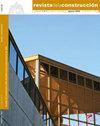离散事件模拟与其他建模技术的集成,以模拟建筑工程和管理:概述
IF 1.4
4区 工程技术
引用次数: 0
摘要
尽管离散事件模拟(DES)已成为建筑施工操作研究中首选的模拟技术,但它存在局限性,例如在操作层面的关注点狭窄。为了最大限度地减少DES限制的影响,研究人员提出将DES与其他仿真技术相结合,如基于代理的建模(ABM)、系统动力学(SD)和虚拟环境(VE)。然而,有限的研究讨论了这种整合过程是否最小化了DES的局限性以及在多大程度上最小化了DES的局限性。本研究总结了2010-2020年间发表的99篇期刊论文,重点研究了DES与ABM、SD和VE的整合。本研究发现,DES与ABM、SD和VE的集成解决了DES的多个局限性,即在面向过程的建模中缺乏人类行为,有限的战略视角,以及与DES模型输出的验证和验证相关的挑战。最后,本研究呼吁未来的研究评估DES、ABM和SD建模技术的同时集成,以便真正考虑建筑项目的复杂性,因为综合仿真工具将需要集成多种方法来抵消其局限性。本文章由计算机程序翻译,如有差异,请以英文原文为准。
Integration of discrete event simulation with other modeling techniques to simulate construction engineering and management: an overview
Although Discrete Event Simulation (DES) has been the preferred simulation technique in construction operation studies, it suffers from limitations, such as narrowed focus at the operational level. To minimize the effect of DES limitations, researchers have proposed the integration of DES with other simulation techniques, such as agent-based modeling (ABM), system dynamics (SD), and virtual environments (VE). However, limited studies have discussed whether this integration process minimizes DES’ limitations and to what extent. This study summarizes 99 journal manuscripts in the existing literature published between 2010-2020, focusing on integrating DES with ABM, SD, and VE. This study found that the integration of DES with ABM, SD, and VE addressed multiple of DES’ limitations, namely, the lack of human behaviors in process-oriented modeling, the limited strategic perspective, and challenges related to the verification and validation of DES models’ outputs. Ultimately, this study calls for future studies to evaluate the simultaneous integration of DES, ABM, and SD modeling techniques so the complexity of construction projects can be truly accounted for, as comprehensive simulation tools will require the integration of multiple methods to counterbalance their limitations.
求助全文
通过发布文献求助,成功后即可免费获取论文全文。
去求助
来源期刊

Revista de la Construccion
工程技术-工程:土木
CiteScore
2.30
自引率
21.40%
发文量
0
期刊介绍:
The Journal of Construction is aimed at professionals, constructors, academics, researchers, companies, architects, engineers, and anyone who wishes to expand and update their knowledge about construction. We therefore invite all researchers, academics, and professionals to send their contributions for assessment and possible publication in this journal. The publications are free of publication charges.
OBJECTIVES
The objectives of the Journal of Construction are:
1. To disseminate new knowledge in all areas related to construction (Building, Civil Works, Materials, Business, Education, etc.).
2. To provide professionals in the area with material for discussion to refresh and update their knowledge.
3. To disseminate new applied technologies in construction nationally and internationally.
4. To provide national and foreign academics with an internationally endorsed medium in which to share their knowledge and debate the topics raised.
 求助内容:
求助内容: 应助结果提醒方式:
应助结果提醒方式:


